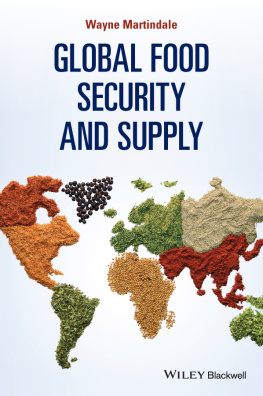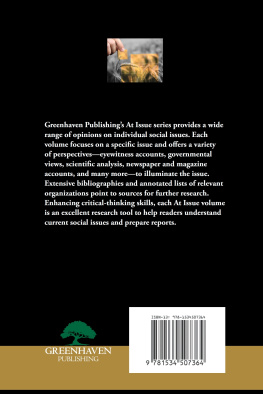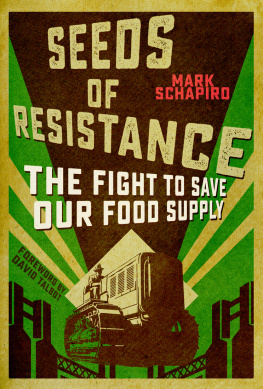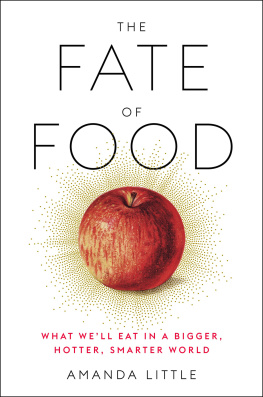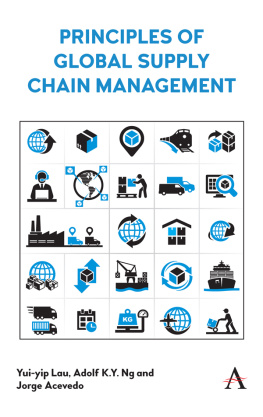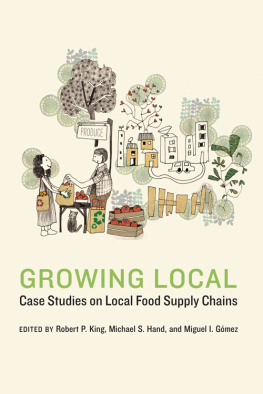
This edition first published 2015 2015 by John Wiley & Sons, Ltd
Registered office: John Wiley & Sons, Ltd, The Atrium, Southern Gate, Chichester, West Sussex, PO19 8SQ, UK
Editorial offices: 9600 Garsington Road, Oxford, OX4 2DQ, UK
The Atrium, Southern Gate, Chichester, West Sussex, PO19 8SQ, UK
111 River Street, Hoboken, NJ 07030-5774, USA
For details of our global editorial offices, for customer services and for information about how to apply for permission to reuse the copyright material in this book please see our website at website at www.wiley.com/wiley-blackwell.
The right of the author to be identified as the author of this work has been asserted in accordance with the UK Copyright, Designs and Patents Act 1988.
All rights reserved. No part of this publication may be reproduced, stored in a retrieval system, or transmitted, in any form or by any means, electronic, mechanical, photocopying, recording or otherwise, except as permitted by the UK Copyright, Designs and Patents Act 1988, without the prior permission of the publisher.
Designations used by companies to distinguish their products are often claimed as trademarks. All brand names and product names used in this book are trade names, service marks, trademarks or registered trademarks of their respective owners. The publisher is not associated with any product or vendor mentioned in this book.
Limit of Liability/Disclaimer of Warranty: While the publisher and author(s) have used their best efforts in preparing this book, they make no representations or warranties with respect to the accuracy or completeness of the contents of this book and specifically disclaim any implied warranties of merchantability or fitness for a particular purpose. It is sold on the understanding that the publisher is not engaged in rendering professional services and neither the publisher nor the author shall be liable for damages arising herefrom. If professional advice or other expert assistance is required, the services of a competent professional should be sought.
Library of Congress Cataloging-in-Publication Data has been applied for.
ISBN: 978-1-1186-9932-4 (paperback)
A catalogue record for this book is available from the British Library.
Wiley also publishes its books in a variety of electronic formats. Some content that appears in print may not be available in electronic books.
Cover image: World Map with Spices iStock/ susoy
For my wife, Deborah, and my daughters, Minnie, Tula, and Tima, who will continue to make the world a better place.
About the Author
Dr Wayne Martindale is a Research Director for MPC Research and an Editor for Science Into, an on-line magazine for food industry innovations. He is a leading figure in the food and agricultural industry for sustainability issues. Dr. Martindale has been an Organisation for Economic Cooperation and Development (OECD) Cooperative Research Programme Fellow, British Grassland Society Fellow for sustainable agricultural systems, and a Commonwealth Scientific and Industrial Research Organisation (CSIRO) McMaster fellow for sustainable food processing. Starting his scientific career as a biochemist at the University of Sheffield he then applied research with the United States Department of Agriculture (USDA) and Levington Agriculture Ltd where he established the first independent fertiliser industry technical information service for chartered agronomists. He has developed undergraduate and postgraduate programmes across the agri-food supply chain at the universities of Leeds, Sheffield, and Sunderland in the United Kingdom. He is also a research fellow in Corporate Social Responsibility at Sheffield Business School.
See www.waynemartindale.com for his current research and updates.
Preface
For me, the route to publishing this book started after I had delivered a conference for the Organisation for Economic Cooperation and Development (OECD) Cooperative Research Programme at Royal Holloway and Bedford College at the University of London in September 2010. I was in the middle of an exciting McMaster Fellowship for the Commonwealth Scientific and Industrial Research Organisation (CSIRO) in Australia and the proceedings of the conference were published by the Association of Applied Biologists in the United Kingdom. All this activity led Andrew Harrison of Wiley to approach me to write a book on food security; it also led to me thinking I was so busy I would not go near such a project. After a few months of thinking about this and looking at the contributors to the proceedings of the London conference Mr. Harrison's insight and tenacity has paid off in that I have written the book in front of you.
The need for supply chain solutions to food security as always struck me as an essential part of getting to a secure and sustainable diet for 9 billion global citizens some 30 years into our future. Having worked in agriculture I was often surprised at a lack of connectivity to the food industry, and when I moved to work with the food industry I was shocked at the level of connectivity to agriculture. When the consumer is placed into this melting pot of conflicts there are naturally pressures and misunderstandings concerned with the sustainability of foods. I believe the food industry has responded to integrating supply chains; there were always examples of these practices but they have become common place even if they are often out of sight from the consumer. This book has tackled the issue of food security pressures operating at global levels and relates them to the operations of the food supply chain and how we put meals together to eat. The subject matter is wide-ranging and there is much I have left out of this book, but I hope to have achieved a balance of informing those who are interested, strengthening the understandings of those in the food industry, and allowing the reader to focus on sustainable solutions.
My book is aimed at those who have an understanding of how the food supply chain behaves and who want to know more. It will guide undergraduate students as well as the informed reader and established expert of food sustainability. I have strived to achieve a generalist approach while not losing understanding that is developed by my expert experience of teaching agriculture, sustainability, and food manufacturing to a wide range of students.
I would like to thank the team at Wiley who have efficiently guided the processing of my manuscript. I would also like to thank the people who have supported me and discussed several issues regarding the food security debate with me, including Adam Bedford at the National Farmers Union (NFU) in Brussels, Chandru Chandrasekhar of Sustein Ltd, Alan Marson of New Food Innovation Ltd, Professor Tim Benton at University of Leeds, Dr Murray Clark of Sheffield Business School, and Dr Martin L Warnes of Ipswich High School. This book is largely a product of the friendship and comradeship I have experienced and the sum of my curiosity that started growing up in Suffolk roaming the Stour Valley around Great Cornard and Sudbury. There are numerous key characters who helped my route to authoring this book, too numerous to mention, but Dr Ian Richards, who was Managing Director at Levington Agriculture Ltd; Professor Peter Lillford CBE, who was a Chief Scientist at Unilever; and Jay Sellahewa, at CSIRO, have had major parts to play in helping me to gain the confidence to put forward ideas and applications in this arena. Finally, a massive heartfelt thank goes to my wife, Deborah, and my children, Minnie, Tula, and Tima Alred-Martindale, and also to Lloyd and Rose Ashton, who never stop inspiring me.
Next page
